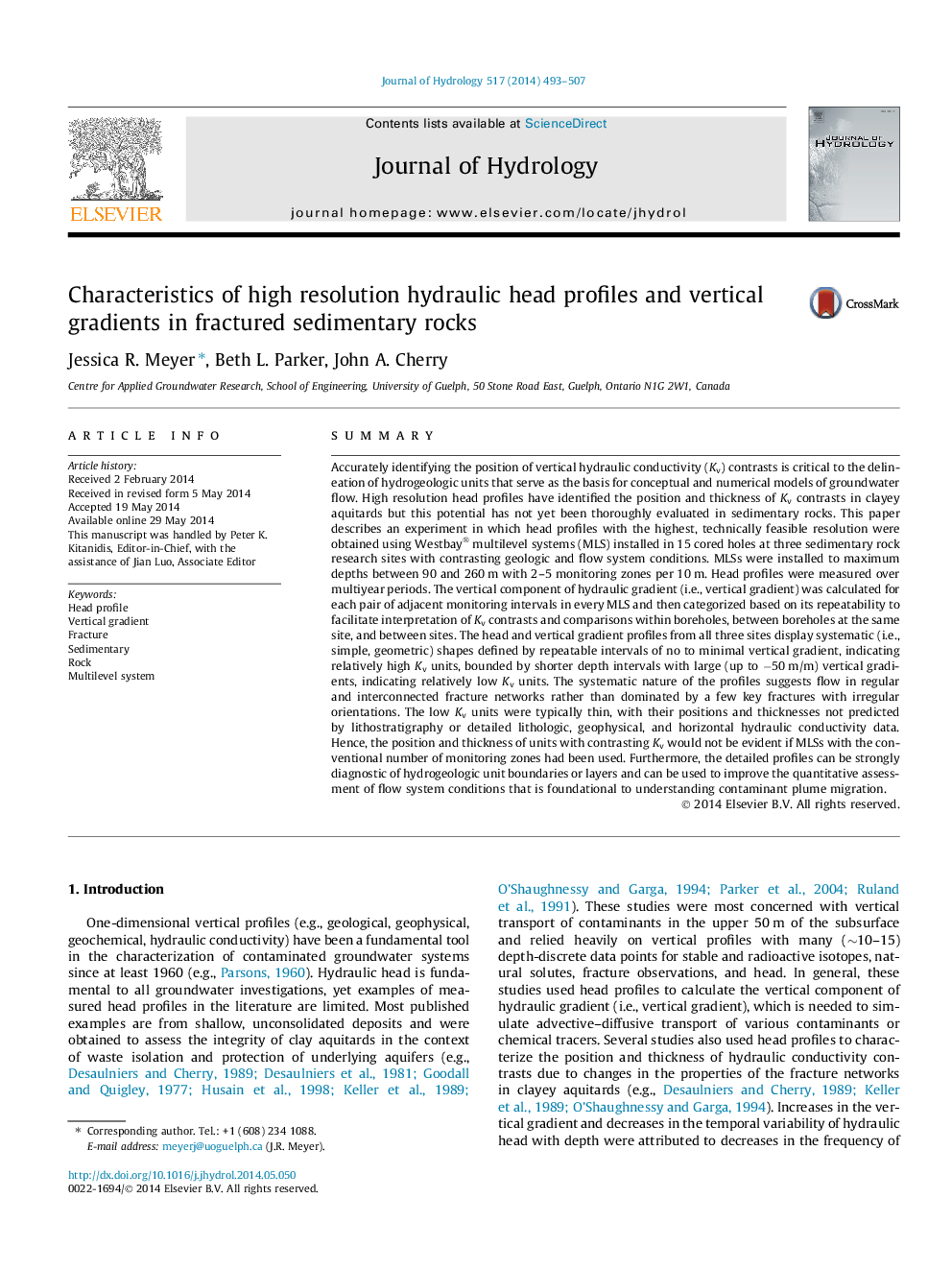| کد مقاله | کد نشریه | سال انتشار | مقاله انگلیسی | نسخه تمام متن |
|---|---|---|---|---|
| 6412972 | 1629931 | 2014 | 15 صفحه PDF | دانلود رایگان |
- Multilevel systems were installed at 3 sedimentary rock sites in North America.
- Each multilevel system has many closely spaced and depth discrete monitoring zones.
- Head profiles had simple shapes that were repeatable over multiyear periods.
- Vertical gradient changes with depth indicated units with contrasting vertical K.
- Lithostratigraphy did not predict the position of units with contrasting vertical K.
SummaryAccurately identifying the position of vertical hydraulic conductivity (Kv) contrasts is critical to the delineation of hydrogeologic units that serve as the basis for conceptual and numerical models of groundwater flow. High resolution head profiles have identified the position and thickness of Kv contrasts in clayey aquitards but this potential has not yet been thoroughly evaluated in sedimentary rocks. This paper describes an experiment in which head profiles with the highest, technically feasible resolution were obtained using Westbay® multilevel systems (MLS) installed in 15 cored holes at three sedimentary rock research sites with contrasting geologic and flow system conditions. MLSs were installed to maximum depths between 90 and 260Â m with 2-5 monitoring zones per 10Â m. Head profiles were measured over multiyear periods. The vertical component of hydraulic gradient (i.e., vertical gradient) was calculated for each pair of adjacent monitoring intervals in every MLS and then categorized based on its repeatability to facilitate interpretation of Kv contrasts and comparisons within boreholes, between boreholes at the same site, and between sites. The head and vertical gradient profiles from all three sites display systematic (i.e., simple, geometric) shapes defined by repeatable intervals of no to minimal vertical gradient, indicating relatively high Kv units, bounded by shorter depth intervals with large (up to â50Â m/m) vertical gradients, indicating relatively low Kv units. The systematic nature of the profiles suggests flow in regular and interconnected fracture networks rather than dominated by a few key fractures with irregular orientations. The low Kv units were typically thin, with their positions and thicknesses not predicted by lithostratigraphy or detailed lithologic, geophysical, and horizontal hydraulic conductivity data. Hence, the position and thickness of units with contrasting Kv would not be evident if MLSs with the conventional number of monitoring zones had been used. Furthermore, the detailed profiles can be strongly diagnostic of hydrogeologic unit boundaries or layers and can be used to improve the quantitative assessment of flow system conditions that is foundational to understanding contaminant plume migration.
Journal: Journal of Hydrology - Volume 517, 19 September 2014, Pages 493-507
